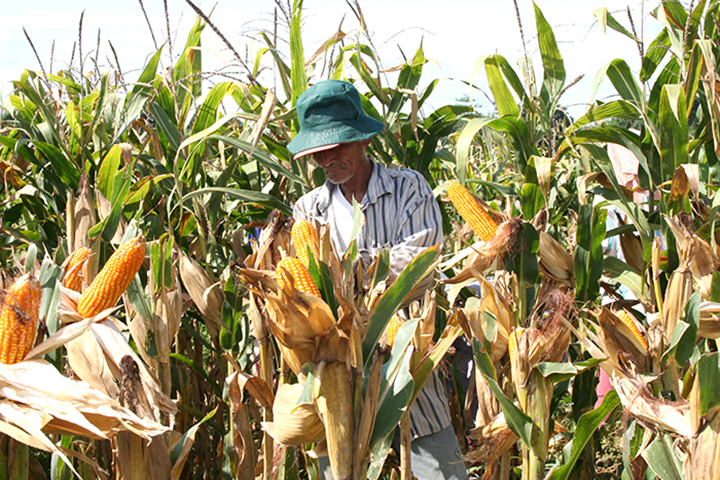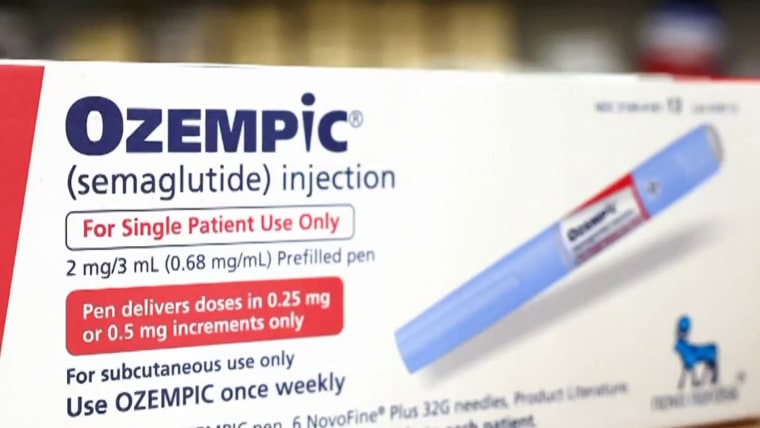Crop tour projects record 2025 U.S. corn harvest, but disease could hit yields – NBC News

U.S. Agricultural Production Outlook for 2025 and Implications for Sustainable Development Goals
A 2025 forecast for United States agricultural output indicates a record corn harvest and a substantial soybean crop. This projection has significant implications for several Sustainable Development Goals (SDGs), particularly SDG 2 (Zero Hunger), by reinforcing the nation’s role as a key global food supplier. However, challenges related to climate resilience, sustainable production methods, and economic viability for farmers highlight interconnected issues across SDG 8 (Decent Work and Economic Growth), SDG 12 (Responsible Consumption and Production), and SDG 13 (Climate Action).
Crop Yield Projections and Food Security (SDG 2)
Projections from the Pro Farmer crop tour suggest a bountiful harvest, which is crucial for maintaining global food supply chains and working towards the goal of Zero Hunger. The United States is the world’s leading corn exporter and second-largest soybean exporter, making its production levels critical for international food security.
Corn Production Forecast
- Projected Production: A record 16.204 billion bushels.
- Projected Average Yield: 182.7 bushels per acre (bpa).
- Note: This forecast is below the U.S. Department of Agriculture’s (USDA) projection of 16.742 billion bushels and 188.8 bpa.
Soybean Production Forecast
- Projected Production: 4.246 billion bushels.
- Projected Average Yield: 53.0 bpa.
- Note: This outlook is slightly under the USDA’s forecast of 4.292 billion bushels and 53.6 bpa, with dry conditions and disease pressure identified as potential limiting factors.
Challenges to Sustainable Production and Climate Resilience (SDG 12 & SDG 13)
While overall weather conditions were favorable, the 2025 growing season highlights vulnerabilities that challenge the resilience and sustainability of current agricultural systems. These factors directly impact the targets of SDG 12, which promotes sustainable production patterns, and SDG 13, which calls for action to combat climate change and its impacts.
Impact of Climate and Environmental Conditions
- Heat Stress: Pockets of heat stress were observed to negatively impact yield potential in certain areas, underscoring the agricultural sector’s vulnerability to climate variability.
- Disease Proliferation: Warm and wet conditions, while beneficial for crop growth, also created an ideal environment for the spread of fungal diseases, posing a significant threat to sustainable yields.
Prevalence of Crop Disease
The widespread presence of crop diseases was a primary concern noted during the assessment, representing a direct threat to production goals and food security. The response to this challenge, including the application of fungicides, raises important considerations for sustainable land management (SDG 15).
- Tar Spot: A fungal disease affecting corn.
- Southern Rust: Noted as more widespread than in previous observations.
- Northern Blight: Another fungal pathogen impacting corn yields.
- Sudden Death Syndrome: A significant disease affecting soybeans.
Economic Viability and Farmer Livelihoods (SDG 8)
The economic health of the agricultural sector is fundamental to achieving SDG 8, which aims to promote sustained, inclusive, and sustainable economic growth and decent work for all. Despite strong production forecasts, U.S. farmers face considerable economic pressures that threaten the long-term viability of their operations.
Market and Economic Pressures
- Declining Prices: A potential surplus from the record harvest is contributing to a third consecutive year of declining corn prices.
- High Production Costs: Farmers continue to face elevated costs for inputs and operations.
- Trade Uncertainty: Tensions with key import markets create uncertainty in demand, particularly for soybeans.
Government Support and Market Response
Federal funding is anticipated to play a significant role in supporting the farm economy in 2025. Meanwhile, commodity markets have responded to the crop tour’s findings, with corn and soybean futures firming on indications that official government harvest forecasts may be overly optimistic. This volatility underscores the economic fragility within the sector.
Analysis of SDGs in the Article
1. Which SDGs are addressed or connected to the issues highlighted in the article?
-
SDG 2: Zero Hunger
The article is centered on agricultural production, specifically the harvesting of corn and soybeans, which are staple food crops. It discusses crop yields, production volumes, and the United States’ role as a top global exporter of these commodities. These topics are directly linked to achieving food security and promoting sustainable agriculture, which are the core objectives of SDG 2.
-
SDG 8: Decent Work and Economic Growth
The article addresses the economic well-being of farmers and the agricultural sector. It mentions declining crop prices, high production costs, trade tensions, and the need for federal funding to support the farm economy. This connects to SDG 8 by highlighting the challenges to sustained economic growth and the economic viability of livelihoods within the agricultural sector.
-
SDG 12: Responsible Consumption and Production
The article touches upon agricultural practices by mentioning the widespread use of fungicides to combat crop diseases. This relates to the sustainable management and efficient use of natural resources and chemicals in food production systems, a key aspect of SDG 12.
2. What specific targets under those SDGs can be identified based on the article’s content?
-
SDG 2: Zero Hunger
-
Target 2.1: End hunger and ensure access to food
The article’s focus on a “record corn crop” and a “bumper soybean crop” directly relates to increasing the global food supply. As the U.S. is the “world’s top corn exporter and No. 2 soybean exporter,” this large-scale production is crucial for ensuring food availability on a global scale.
-
Target 2.3: Double the productivity and incomes of small-scale food producers
The article discusses factors affecting farmer incomes, such as “declining corn prices,” “high production costs,” and “uncertain demand” due to trade tensions. It also mentions that farmers are “facing a third straight year of declining corn prices,” which directly impacts their economic viability and income levels, a central theme of this target.
-
Target 2.4: Ensure sustainable food production and resilient agricultural practices
The article highlights threats to resilient agriculture by detailing the impact of “pockets of plant disease and heat stress.” The widespread presence of “fungal diseases such as tar spot, southern rust and northern blight in corn, and sudden death syndrome in soybeans” demonstrates the challenges in maintaining productive and sustainable agricultural systems.
-
-
SDG 8: Decent Work and Economic Growth
-
Target 8.2: Achieve higher levels of economic productivity
The article is replete with data on agricultural productivity, such as average yields (“182.7 bushels per acre” for corn). However, it also notes that diseases are “real yield robbers,” indicating a direct threat to the economic productivity of the agricultural sector.
-
-
SDG 12: Responsible Consumption and Production
-
Target 12.4: Responsible management of chemicals and waste
The mention of “bright yellow crop dusters” spraying “wide white plumes of fungicide” to combat disease directly points to the use of chemicals in agriculture. This practice is relevant to the environmentally sound management of chemicals throughout their life cycle to minimize adverse impacts on human health and the environment.
-
3. Are there any indicators mentioned or implied in the article that can be used to measure progress towards the identified targets?
-
SDG 2: Zero Hunger
-
Indicator 2.3.1: Volume of production per labour unit (Productivity)
The article explicitly provides measures of agricultural productivity. It states projected average yields like “182.7 bushels per acre” for corn and “53.0 bpa” for soybeans. These figures are direct indicators of crop productivity.
-
Indicator 2.3.2: Average income of small-scale food producers
This indicator is implied through the discussion of the farm economy. The article notes that farmers face “declining corn prices,” “high production costs,” and that any improvement in the “farm economy will improve in 2025” will largely come from “federal funding.” This suggests that farmer income from production alone is under pressure.
-
-
SDG 8: Decent Work and Economic Growth
-
Indicator 8.2.1: Annual growth rate of real GDP per employed person
The article implies this indicator by focusing on crop yields and production volumes (e.g., “16.204 billion bushels” of corn), which are fundamental components of the agricultural sector’s contribution to GDP. The discussion of “yield robbers” like disease and heat stress points to factors that can negatively impact this growth rate.
-
-
SDG 12: Responsible Consumption and Production
-
Implied Indicator: Use of pesticides/fungicides per unit of agricultural land
While not a formal UN indicator, the article’s description of “crop dusters” spraying “plumes of fungicide” due to disease being “more widespread than we’ve ever seen before” implies a significant and potentially increasing use of chemical treatments in agriculture. This can be used as a proxy to measure reliance on chemical interventions.
-
4. Summary Table of SDGs, Targets, and Indicators
| SDGs | Targets | Indicators |
|---|---|---|
| SDG 2: Zero Hunger |
2.1: End hunger and ensure access to food.
2.3: Double the productivity and incomes of small-scale food producers. 2.4: Ensure sustainable food production and resilient agricultural practices. |
Explicit: Crop production volumes (“16.204 billion bushels”) and yields (“182.7 bushels per acre”).
Implied: Farmer income, affected by “declining corn prices” and “high production costs.” Implied: Resilience of agricultural systems, challenged by “plant disease and heat stress.” |
| SDG 8: Decent Work and Economic Growth | 8.2: Achieve higher levels of economic productivity. | Implied: Economic productivity of the agricultural sector, measured by crop yields and threatened by “yield robbers” like disease. |
| SDG 12: Responsible Consumption and Production | 12.4: Responsible management of chemicals and waste. | Implied: Use of chemical inputs in agriculture, indicated by the mention of “crop dusters” spraying “fungicide” to manage widespread disease. |
Source: nbcnews.com

What is Your Reaction?
 Like
0
Like
0
 Dislike
0
Dislike
0
 Love
0
Love
0
 Funny
0
Funny
0
 Angry
0
Angry
0
 Sad
0
Sad
0
 Wow
0
Wow
0



















































.jpg.webp?itok=0ZsAnae9#)

























